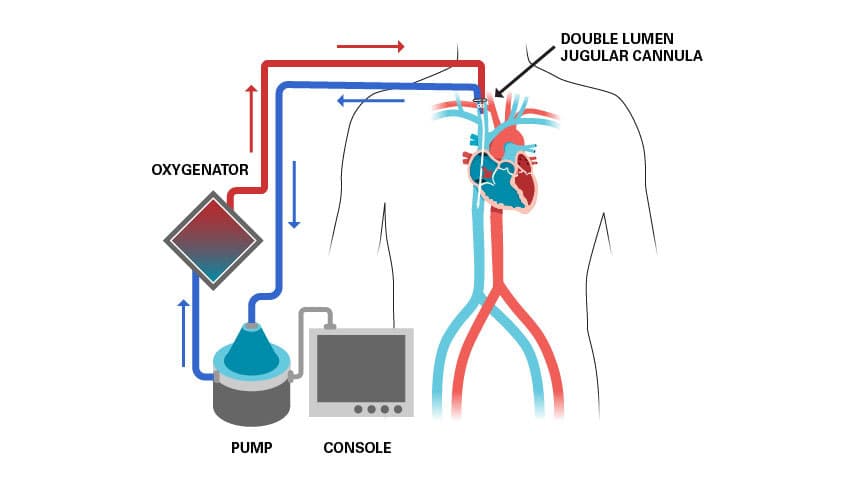ECMO or Extracorporeal membrane oxygenation (ECMO) is a medical procedure conducted to replace the function in the heart and lung region when the said parts are not able to function properly. The procedure is conducted when the patient’s lungs or heart is still not able to function properly even after medication or support from the ventilator. The procedure is also conducted at times when the doctors assess the state of functioning of the other organs.
The procedure is used in cases of pneumonia, sepsis, congenital hernia, congenital heart condition, meconium aspiration syndrome, and more.
How ECMO Treatment Works (The Complete Procedure)
Before conducting the ECMO treatment, the doctor conducts a few tests and diagnostic checkups to assess the situation of the patient. These include echocardiogram, electrocardiogram, USG Head, and more. Once the tests are done and the reports are logged, a pre-evaluation procedure is conducted where the patient is being readied for the procedure.
The ECMO is conducted by a doctor by pumping the blood outside of the body to a heart-lung machine, which then removes the carbon dioxide and pumps the blood with oxygen back to the patient’s body for functioning. The process involves the use of a heart-lung machine where the blood flows from the right side of the heart to the membrane oxygenator in the machine. The machine then rewarms the blood and sends it back to the patient. The main motive of using the machine is to facilitate the carbon dioxide and oxygen exchange in the blood so that the body's functioning can continue. For this procedure, the doctor will place a cannula in the large vein and the large artery to help the blood exchange occur.

The cost of an ECMO depends on various factors like:
Note:
ECMO treatments are lifesaving treatment that allows for the functioning of the patient’s heart and lungs even during heart or lung failure. It helps to stabilize and keep the patient alive while other diagnoses and procedures can be conducted to help them recover.
Ans: In critical conditions, when doctors need to perform surgery while providing blood supply to vital organs, ECMO treatment is used. Basically, ECMO keeps the patient stable during the surgical procedure, and it buys more time for the doctors to perform the surgery or treatment without cutting the blood supply. Therefore it depends on how long a patient will undergo ECMO, it could be for a few hours, days, or even weeks.
Q2. Are There Any Risks Involved With ECMO?
Ans: The main use of ECMO treatment is to take out the patient from the danger zone and provide the treatment. However, before the ECMO machine is connected to the patient, the team of doctors makes sure to keep the viscosity of the blood pretty low to prevent clotting. Therefore, if there’s any bleeding, the blood won’t clot, and it may put the patient at risk since the patients that undergo ECMO already have a critical condition.
Q3. What Is The ECMO Machine?
Ans: Basically, an ECMO machine works like an artificial pair of lungs, and while a patient is connected to this machine, the blood is going through the machine to filter out carbon dioxide and mix in oxygen to clean the blood.